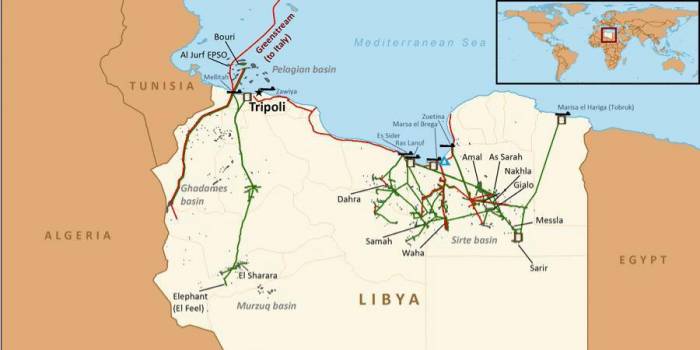Strike in Libya: Oil at risk


By Samir Muradov
The Libyan National Oil Corporation (NOC) has once again found itself at the center of the country’s economic and social upheavals. This time, the company announced a reduction in oil production at one of its largest fields, El Sharara, due to a sit-in strike by residents of the Fezzan region in southwestern Libya. This decision has once again highlighted the fragility of Libya’s oil industry, which has become a hostage to local conflicts and political instability, preventing the country from fully realizing its energy potential.
El Sharara, which produces about 300,000 barrels of oil per day, has repeatedly halted operations due to protests. In January 2024, the field was forced to stop production due to similar actions by residents demanding attention to their social and economic needs. Only after the intervention of NOC’s head, Farhat Bengdara, and his promises to meet the demands of the protesters, was production resumed. However, new protests once again threaten production stability, underscoring the dissatisfaction of local residents, the reasons for which remain unclear.
Amid these events, the situation with oil production in Libya remains unstable. Libya, which holds the largest hydrocarbon reserves in Africa, continues to struggle with internal problems that hinder it from realizing its potential. As of early 2020, proven crude oil reserves were estimated at 48.4 billion barrels. However, despite being a member of OPEC, Libya is not participating in the current OPEC+ agreements to cut production, allowing it to maintain a certain degree of flexibility. In June 2024, according to OPEC, the country’s oil production was 1.2 million barrels per day, higher than in April and May of the same year, News.Az reports citing neftegaz.ru .
Before the civil war and the overthrow of Muammar Gaddafi’s regime in 2011, Libya was one of the leading oil exporters in the world. In 2008, the country produced 1.803 million barrels per day, but political upheaval led to a significant drop in this figure. From 2013 to 2020, periodic halts in oil production and exports resulted in losses exceeding $180 billion USD. Only the truce between western and eastern forces allowed production to be restored to nearly 1.2 million barrels per day.
However, political instability remains a serious obstacle to increasing production. In February 2023, NOC’s head, Farhat Bengdara, announced plans to increase oil production to 2 million barrels per day. But achieving this goal requires significant state funding, infrastructure development, and export terminals. This is a challenging task for a country caught in a political deadlock between the government in Tripoli and a rival prime minister supported by the eastern parliament.
Thus, the current situation in Libya reflects the economy’s deep dependence on oil, as well as unresolved political and social conflicts. These factors exacerbate the country’s instability and complicate efforts to increase oil production. Amid these challenges, local residents continue to use protests to draw attention to their problems, creating additional risks for the stability of the national oil industry.
Given the importance of oil to the Libyan economy, the situation at El Sharara serves as a reminder of the need to diversify economic activities and develop a strategy for strengthening political stability. While the future of oil production in the country remains uncertain, the international community and Libyan authorities must focus on finding sustainable solutions to reduce tensions and support long-term economic growth.





